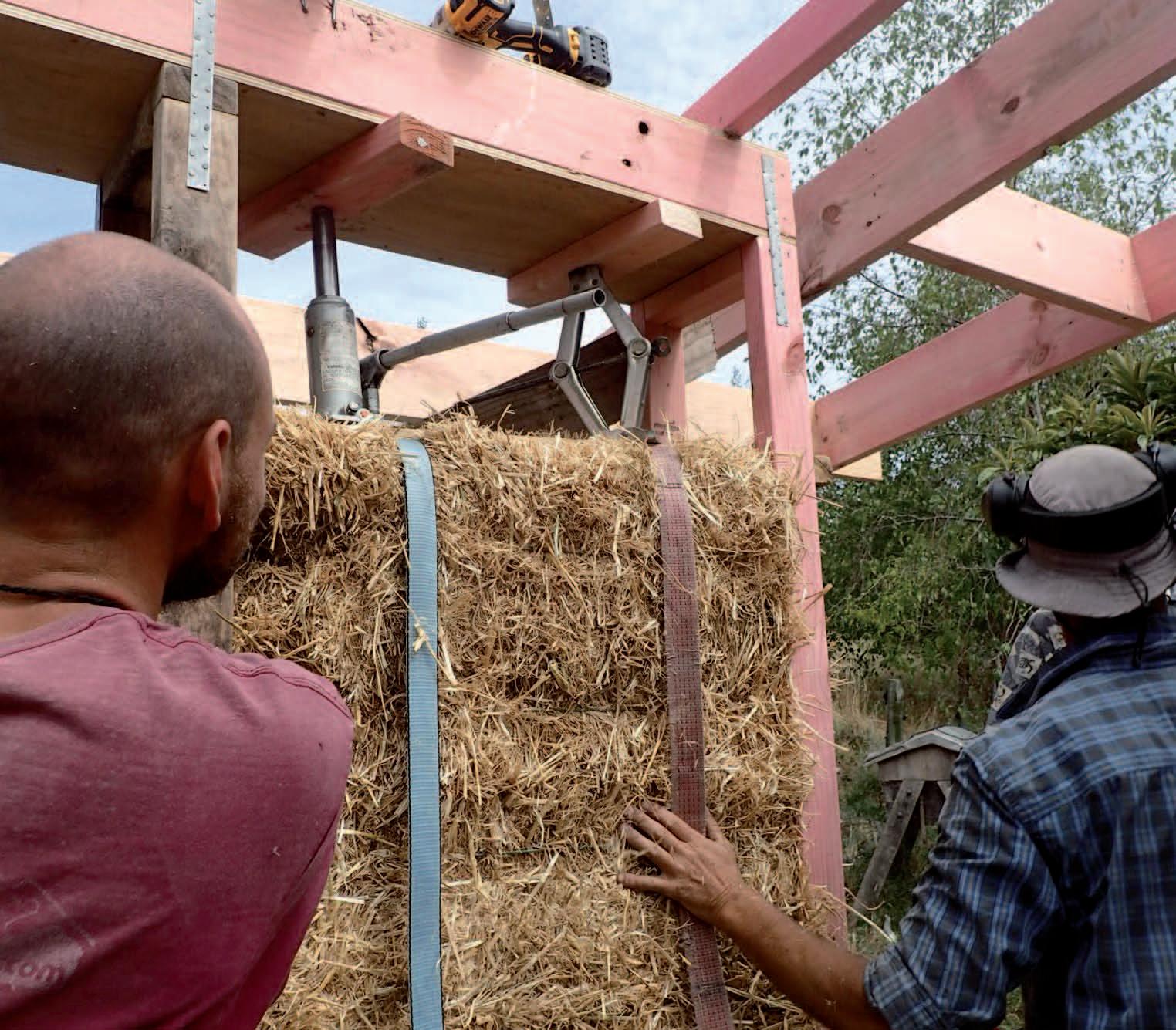
2 minute read
STRAWBALE COMPRESSION
NOTE ON STRAWBALE COMPRESSION

Advertisement


By Pat Mawson

Photos - opposite page, middle from left to right: Creative afternoon on the 1st cottage; Lime plaster coat - note the use of gloves; Final coat on the second cottage - very satisfying work; Detailing around window - it was stressed detail is very important, later we were shown how to make flashings. This page from top to bottom: Final section of earth floor in 10m2 room; Tool construction - whipping up some trowels and floats for plastering; Shed Floor - Vapour barrier + homemade floats; Co-author and team mascot. There is some debate about how much vertical compression is required and the best way to achieve compression in a straw bale wall. Good compression improves the structural integrity of the wall and prevents settling over time, which could lead to plaster cracking or lower thermal performance. Broadly there are two main methods in non-load bearing straw bale structures: Bales are squeezed in under a fixed top plate (usually a structural beam), or a floating top plate is pulled down on top of bales to compress the wall. NZS4299:2020 Appendix E (Informative section on Straw Bale in the revised Earth Building Standard) covers both methods. In NZ standard agricultural bales from most bale presses are close to 450mm wide, 350mm high, and 900mm long. The length can vary considerably depending on the quality of the baler and operator, and the density of the crop. In my experience it is pointless trying to design the building around bale length. It is relatively easy to retie bales and adjust the length to suit as required. The amount of compression achieved will vary depending on the quality and density of the bales. Bales can be stacked flat or on edge. The thermal performance is similar despite the 100mm difference in width because of the orientation of the straw. It is much easier to adjust bales (with a chainsaw) to fit the height of a wall if they are on edge. There are pros and cons with both compression methods, and both have their fan clubs. I belong to the fixed top plate fan club! The main reason is simplicity of construction. The floating top plate assembly can quickly become complicated and once compressed creates a void at the top off the wall that must be insulated carefully and filled in. There is often a perception that it is hard to achieve compression with the fixed plate but with a little bit of ingenuity it is possible to achieve as much compression as you want. We use car jacks to squash down the wall and then hold the bales down with temporary straps while the last bale is inserted. Maybe at a conference one day we should assemble two teams to have a compression competition! I am not sure which team would win but both walls would have far more compression than is practically required.










